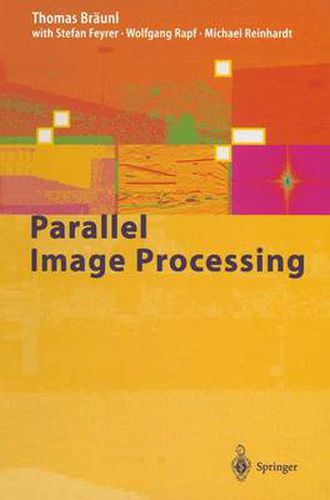Readings Newsletter
Become a Readings Member to make your shopping experience even easier.
Sign in or sign up for free!
You’re not far away from qualifying for FREE standard shipping within Australia
You’ve qualified for FREE standard shipping within Australia
The cart is loading…






This title is printed to order. This book may have been self-published. If so, we cannot guarantee the quality of the content. In the main most books will have gone through the editing process however some may not. We therefore suggest that you be aware of this before ordering this book. If in doubt check either the author or publisher’s details as we are unable to accept any returns unless they are faulty. Please contact us if you have any questions.
This book introduces the area of image processing and data-parallel processing. It covers a number of standard algorithms in image processing and describes their parallel implementation. The programming language chosen for all examples is a structured parallel programming language which is ideal for educational purposes. It has a number of advantages over C, and since all image processing tasks are inherently parallel, using a parallel language for presentation actually simplifies the subject matter. This results in shorter source codes and a better understanding. Sample programs and a free compiler are available on an accompanying Web site.
$9.00 standard shipping within Australia
FREE standard shipping within Australia for orders over $100.00
Express & International shipping calculated at checkout
This title is printed to order. This book may have been self-published. If so, we cannot guarantee the quality of the content. In the main most books will have gone through the editing process however some may not. We therefore suggest that you be aware of this before ordering this book. If in doubt check either the author or publisher’s details as we are unable to accept any returns unless they are faulty. Please contact us if you have any questions.
This book introduces the area of image processing and data-parallel processing. It covers a number of standard algorithms in image processing and describes their parallel implementation. The programming language chosen for all examples is a structured parallel programming language which is ideal for educational purposes. It has a number of advantages over C, and since all image processing tasks are inherently parallel, using a parallel language for presentation actually simplifies the subject matter. This results in shorter source codes and a better understanding. Sample programs and a free compiler are available on an accompanying Web site.